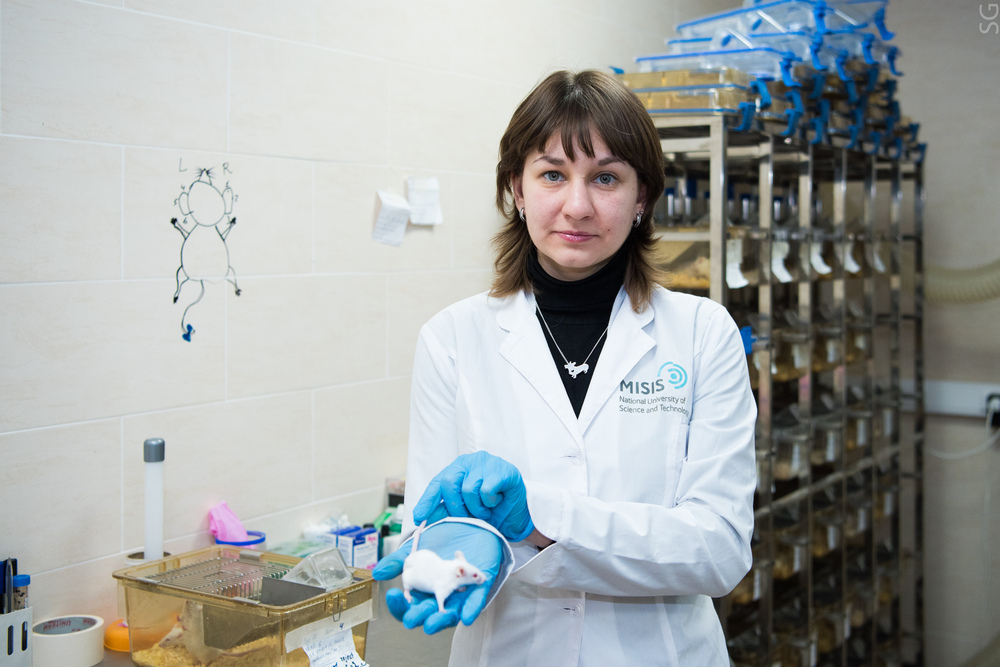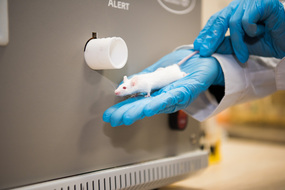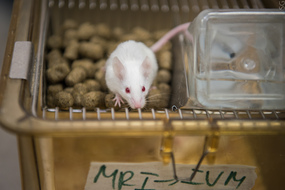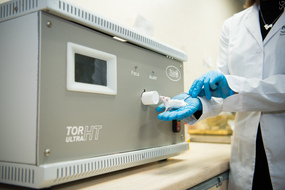A group of scientists from NUST MISIS has presented the test results of an innovative oncotherapy technology based on hyperthermia — heating a tumor to a certain temperature due to nanoparticles introduced into it. The drug based on cobalt ferrite nanoparticles cured 100% of the mice with intestinal cancer from the experimental group. Project results have been published in the Nanomedicine: Nanotechnology, Biology, and Medicine international scientific journal.
Magnetic hyperthermia is a new and developing method of treating cancer, in which intense heating can cause cellular proteins denaturation, which quickly destroys tumor cells. However, so that healthy tissues of the body were not damaged together with the sick ones, the method involves the selective introduction of an agent with magnetic properties into the tumor. Due to these properties, it provides localized and controlled heating in the presence of an electromagnetic field. The agent — metal oxide nanoparticles play this role — contacts the tumor cells and heats up under the influence of a kilohertz variable electromagnetic field, destroying them.
However, the technology has not yet been systematized. Scientists are looking for materials, and most importantly, temperature conditions that will be the most effective for this procedure. Material scientists and biochemists at the NUST MISIS Biomedical Nanomaterials Laboratory published promising in vitro and in vivo studies that have shown that for successful antitumor therapy it is necessary to select the temperature regimen specifically for each type of cancer.
In particular, the group managed to achieve the complete disappearance of malignant neoplasms in 100% of mice with colon cancer after heating the tumor at a temperature in the range
“We have been observing the groups of animals with two different tumor models — patients with mildly aggressive colon cancer CT26 and aggressive metastatic breast cancer 4T1. Both groups have received an injection of a suspension of cobalt ferrite nanoparticles into the tumor and further therapy with magnetic hyperthermia at three different temperature conditions”, says Anastasia Garanina, an engineer at the Biomedical Nanomaterials Laboratory at NUST MISIS.
Scientists have conducted a comparative analysis of the effects of different temperatures on two models of malignant tumors — non-aggressive and “evil”, actively metastatic — and have found that colon cancer cells are more sensitive to hyperthermia and die even when heated in the range
“Breast cancer, according to a series of experiments, turned out to be more resistant to heat, and its cells died only with high-temperature hyperthermia > 47 °C,” Garanina adds. In the groups of animals that were treated at temperatures of
46-48 °C and58-60 °C, the survival rate was25-40%. However, an important discovery was the fact that magnetic hyperthermia therapy leads to a reduction in the incidence of metastases in the animal’s body compared to surgical removal of the tumor."
Currently, the team continues laboratory research to optimize the work of nano preparation as part of preclinical studies.






